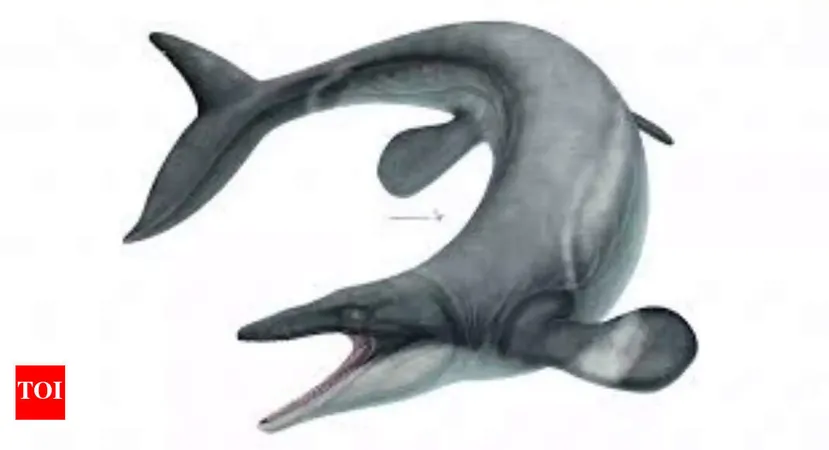
Unveiling Jormungander: The Fearsome 24-Foot 'Sea Dragon' of the Cretaceous Seas
2025-08-31
Author: Rajesh
Unearthed in North Dakota: A Prehistoric Marvel
In a groundbreaking discovery from 2015, paleontologists uncovered a striking new species of mosasaur, aptly named Jormungander walhallaensi, in Walhalla, North Dakota. Stretching an impressive 24 feet long, this formidable "sea dragon" roamed the oceans approximately 80 million years ago, providing invaluable insights into the complex web of life during the Late Cretaceous period.
A Deep Dive into Evolutionary Significance
Named after the legendary Norse sea serpent, Jormungander offers a fascinating look at the evolutionary journey of marine reptiles. This near-complete fossil, featuring an intact skull, jaws, and spine, showcases a transitional form in the mosasaur lineage, bridging the gap between smaller species like Clidastes and colossal giants such as Mosasaurus.
Stunning Fossil Unearthed: A Window to the Past
The fossil discovery astonished the scientific community with its remarkable preservation. Nearly the entire skeleton was recovered, including vital anatomical features that have eluded researchers for decades. After eight years of meticulous analysis, scientists confirmed that this species was entirely unique, adding a crucial piece to the puzzle of mosasaur evolution.
A Force of Nature: The Anatomy of Jormungander
Estimated at 24 feet in length, Jormungander walhallaensi was no ordinary marine predator. Equipped with powerful flippers and a shark-like tail, it sported distinctive facial features described as "angry eyebrows." These characteristics underscore its pivotal role in the mosasaur family tree, showcasing an evolutionary blend that offers clues about the dietary and hunting adaptations that allowed this creature to thrive.
Understanding Late Cretaceous Oceans
Jormungander thrived during a time when mosasaurs were among the top predators of the oceans. Despite their dinosaur-like appearance, these creatures are more closely related to modern lizards and snakes. The discovery of Jormungander enhances our comprehension of marine ecosystems during a critical phase in Earth's history.
A New Lens on Marine Diversity
Beyond its evolutionary significance, Jormungander walhallaensi illuminates life in the ancient Western Interior Seaway, an expanse of water that bisected North America during the Late Cretaceous. As highlighted in recent studies, findings of this nature deepen our understanding of prehistoric marine life, revealing how diverse species adapted to their environments long before the cataclysmic events that reshaped the planet.
Conclusion: The Legacy of Jormungander
Jormungander walhallaensi is more than an exciting addition to the encyclopedia of ancient life; it serves as a vital link in unraveling the complex evolutionary history of marine reptiles. Its unique anatomy and adaptive features provide scientists with an exceptional opportunity to explore the evolutionary dynamics of prehistoric oceans. This remarkable "sea dragon" not only highlights the incredible diversity of the Late Cretaceous but also enriches our understanding of the paths leading to modern marine ecosystems.

 Brasil (PT)
Brasil (PT)
 Canada (EN)
Canada (EN)
 Chile (ES)
Chile (ES)
 Česko (CS)
Česko (CS)
 대한민국 (KO)
대한민국 (KO)
 España (ES)
España (ES)
 France (FR)
France (FR)
 Hong Kong (EN)
Hong Kong (EN)
 Italia (IT)
Italia (IT)
 日本 (JA)
日本 (JA)
 Magyarország (HU)
Magyarország (HU)
 Norge (NO)
Norge (NO)
 Polska (PL)
Polska (PL)
 Schweiz (DE)
Schweiz (DE)
 Singapore (EN)
Singapore (EN)
 Sverige (SV)
Sverige (SV)
 Suomi (FI)
Suomi (FI)
 Türkiye (TR)
Türkiye (TR)
 الإمارات العربية المتحدة (AR)
الإمارات العربية المتحدة (AR)